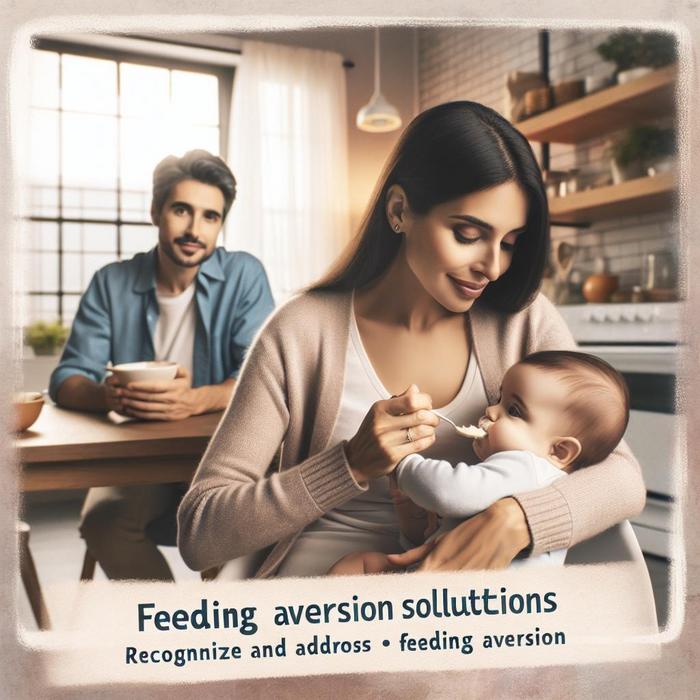Understanding Feeding Aversion
Feeding aversion is a common issue that many parents face with their babies. This condition can cause a lot of stress and confusion, especially for first-time parents. But don’t worry, there are plenty of effective solutions to address this problem. In this post, we’ll delve deeper into understanding what feeding aversion is and how to tackle it using scientifically backed methods and expert advice.
What is Feeding Aversion?
A feeding aversion refers to a situation where a baby – who is otherwise healthy – starts to fuss, cry, or show signs of distress when it’s time for feeding. This can occur whether you’re breastfeeding, bottle-feeding, or even during the introduction of solids. Recognizing the signs of feeding aversion can be the first step to finding a solution.
Here are some common signs of feeding aversion:
- Your baby is repelling or pulling away during feeding times.
- Your baby is crying or showing distress when being fed.
- Your baby is feeding significantly less than usual.
Feeding aversion can be a challenging issue to deal with, but remember that there’s always help and advice available. This article from WebMD provides a comprehensive overview of what you need to know about feeding aversion.
Feeding Aversion Solutions
Once you’ve confirmed that your baby is experiencing feeding aversion, it’s important to swiftly address the situation. Here are a few tips to help you introduce feeding aversion solutions:
- Eliminate Distractions: Often, a peaceful, quiet environment can make a world of difference. Try to make feeding times calm and free from distractions.
- Try Different Bottle Designs: Sometimes, the bottle itself can be the issue. Experiment with different bottles to see what your baby prefers. Here is a guide to the most enjoyable bottles for babies and parents.
- Seek Expert Advice: If feeding problems persist, don’t hesitate to consult a healthcare professional. They can provide you with personalized advice and resources. Programs like this Bottle Feeding Aversion Program can also offer support and guidance through the process.
New Perspectives on Feeding
Remember, every baby is unique, and not all feeding aversion solutions might work for everyone. Finding what works best for your child can be a process of trial and error. It’s important to remain patient and reassuring, providing a nurturing and comfortable environment for your child at mealtimes. Our article on making feeding a joyful experience can provide more tips on how to create a stress-free feeding environment.
A Final Note on Baby Health
Feeding is a crucial aspect of your baby’s development. While addressing feeding aversion can be challenging, it’s also an opportunity to learn more about your child’s preferences and behaviors. Once resolved, it allows you and your baby to enjoy feeding times, ensuring healthy growth and development. This blog post explores why some babies refuse to be bottle-fed and offers insight into dealing with this scenario.
Common Causes of Feeding Aversion
Feeding aversion can be caused due to a multitude of reasons, ranging from physical discomfort to psychological factors. Here are some of the most common causes:
- Oral or Swallowing Difficulties: Babies might avoid feeding if they experience discomfort when swallowing or sucking. This could be due to issues like tongue-tie or acid reflux.
- Sensory Sensitivity: Some babies may have a heightened sensitivity to taste, texture, or smell, causing them to refuse specific foods.
- Illness or Teething: If a baby is unwell or teething, they might find feeding uncomfortable and thus develop an aversion.
- Behavioral Issues: Stress, anxiety, or negative experiences associated with feeding could lead to feeding aversion.
More about these causes can be found on these resources, Babycare Advice and Pediatric Feeding News.
Some Helpful Tips
In addition to the suggestions given above, you can also try these helpful tips:
- Encourage Self-Feeding: As babies grow older, they start showing interest in feeding themselves. Encouraging self-feeding can build their confidence and interest in food.
- Introduce Variety: Change can stimulate interest. Try introducing different foods, flavors, and textures to your baby’s diet. Make sure to introduce one new food at a time to avoid any potential allergic reactions.
- Stay Calm and Patient: Remember that babies can sense frustration or stress. Despite the challenges, stay calm and patient during feeding times.
Final Thoughts
A feeding aversion can be a challenging period for both you and your baby, but remember, it’s often a phase that will pass. Be patient, maintain a positive feeding environment, and don’t hesitate to seek professional advice if needed.
This Healthline’s article can offer more information about oral aversion in babies, and here’s how one parent overcame a feeding aversion on Little Peach Sleep’s blog.
Moving forward, as you apply these strategies, remember to celebrate small wins and remain flexible. Improving a feeding aversion can require some adjustment and experimentation. Therefore, don’t be too hard on yourself or the baby. Keep in mind that the ultimate goal is a happy, healthy baby who enjoys exploring and consuming nourishing food.






